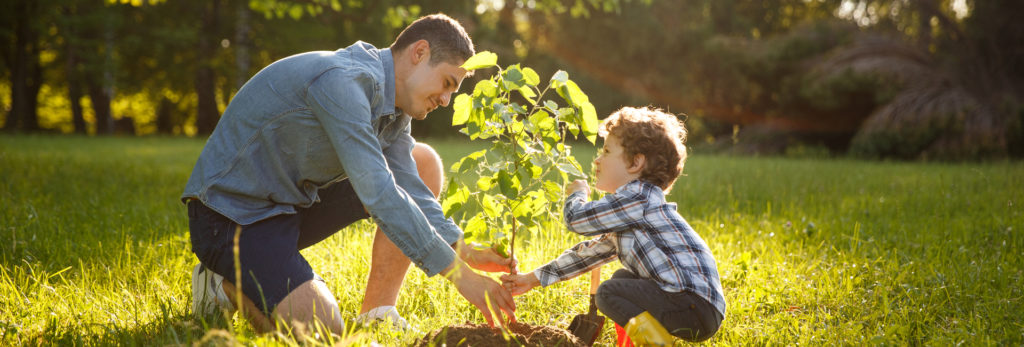
With the warmer weather here, now is the perfect time to get outside and spend some time improving your outdoor space. Planting new trees and shrubs is an excellent way to spruce up your garden, and doing so can even greatly benefit the environment.
It seems as though many are planning on doing this, too – Aviva reports that 33% of UK residential gardens expect to see new trees, hedges, or shrubs introduced this year.
Before you head out and put your green fingers to good use, it’s important to be aware of potential subsidence risks, especially if you plan on planting new wooded foliage.
Continue reading to discover why planting trees and shrubs near your home may result in subsidence, and how you could potentially avoid it.
Subsidence can cause the foundations of your home to sink
Subsidence occurs when the ground beneath your property sinks, often causing damage to its foundations. This commonly happens during warmer spells, as the heat can dry out the soil, leading to shrinkage.
Certain soil types are often more susceptible to subsidence – clay soils, in particular, tend to crack and shift more during prolonged dry spells. Additionally, some tree and shrub species can sometimes accelerate subsidence, as many absorb more water and dry out the soil more quickly.
It may be prudent to take any measures necessary to avoid subsidence. Home Selling Expert states that the average cost to repair sinkage is around £6,000 to £14,000, though more severe cases could cost as much as £50,000.
To identify subsidence, you should keep an eye out for any cracks in the walls of your home. Cracks caused by subsidence are more distinctive than others, as they are typically wider at the top than at the bottom, and can more often be found around doors and windows.
Some helpful tree and shrub tips that could help you reduce the chance of subsidence
Before you plough ahead and introduce some new greenery to your property’s surroundings, it may first be wise to consider the type of tree or shrub you plant.
As you read earlier, certain species with a higher water demand can accelerate subsidence, including:
- Poplar
- Willow
- Elms
- Oak
So, it may be worth planting trees and shrubs with shorter root structures and lower water demand, such as:
- Birch
- Elder
- Hazel
- Magnolia
When you’ve decided which tree or shrub would best suit your garden, the next thing to consider is where to plant them. You should ideally be as strategic as possible when choosing their location – planting them close to your home or garage can give roots more opportunity to damage your property.
And, if you already have trees or shrubs, it may be wise to pollard them. This is essentially a method of pruning that thins out branches and reduces trees and shrubs’ water demand, allowing the soil to retain more water.
Ultimately, paying attention to how and what you plant near your property can help avoid expensive issues down the line.
Get in touch
If you would like some expert advice on any mortgage matters or how to maintain a healthy home, please get in touch with us.
Email enquiry@edinburghmortgageadvice.co.uk or call 0131 339 2281 to find out how we can help.
Please note
This blog is for general information only and does not constitute advice.

